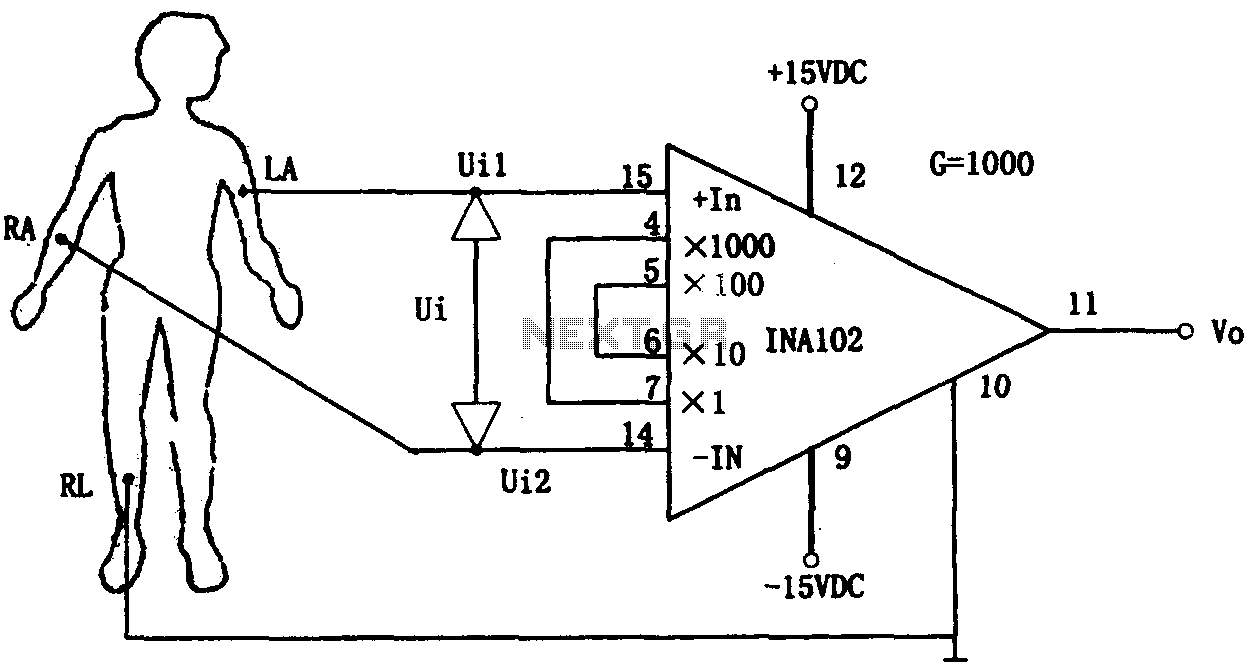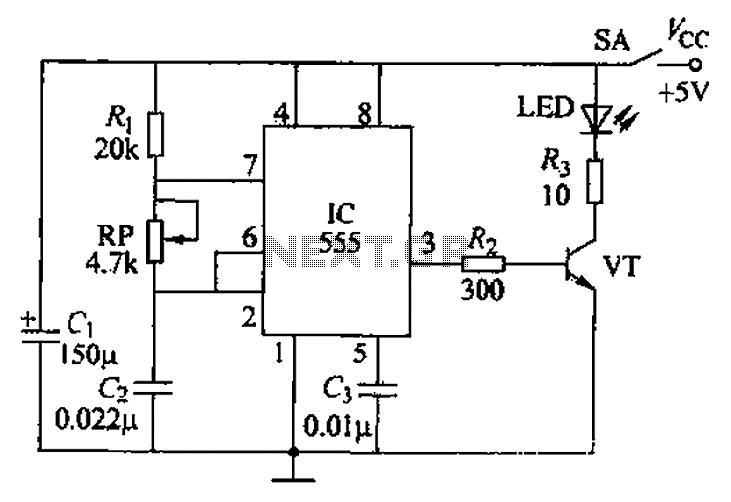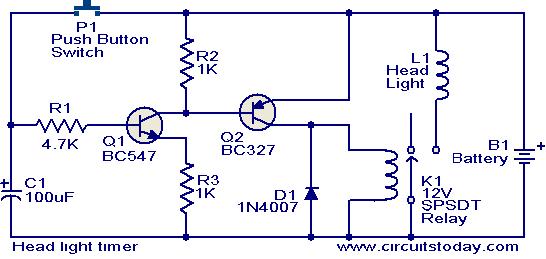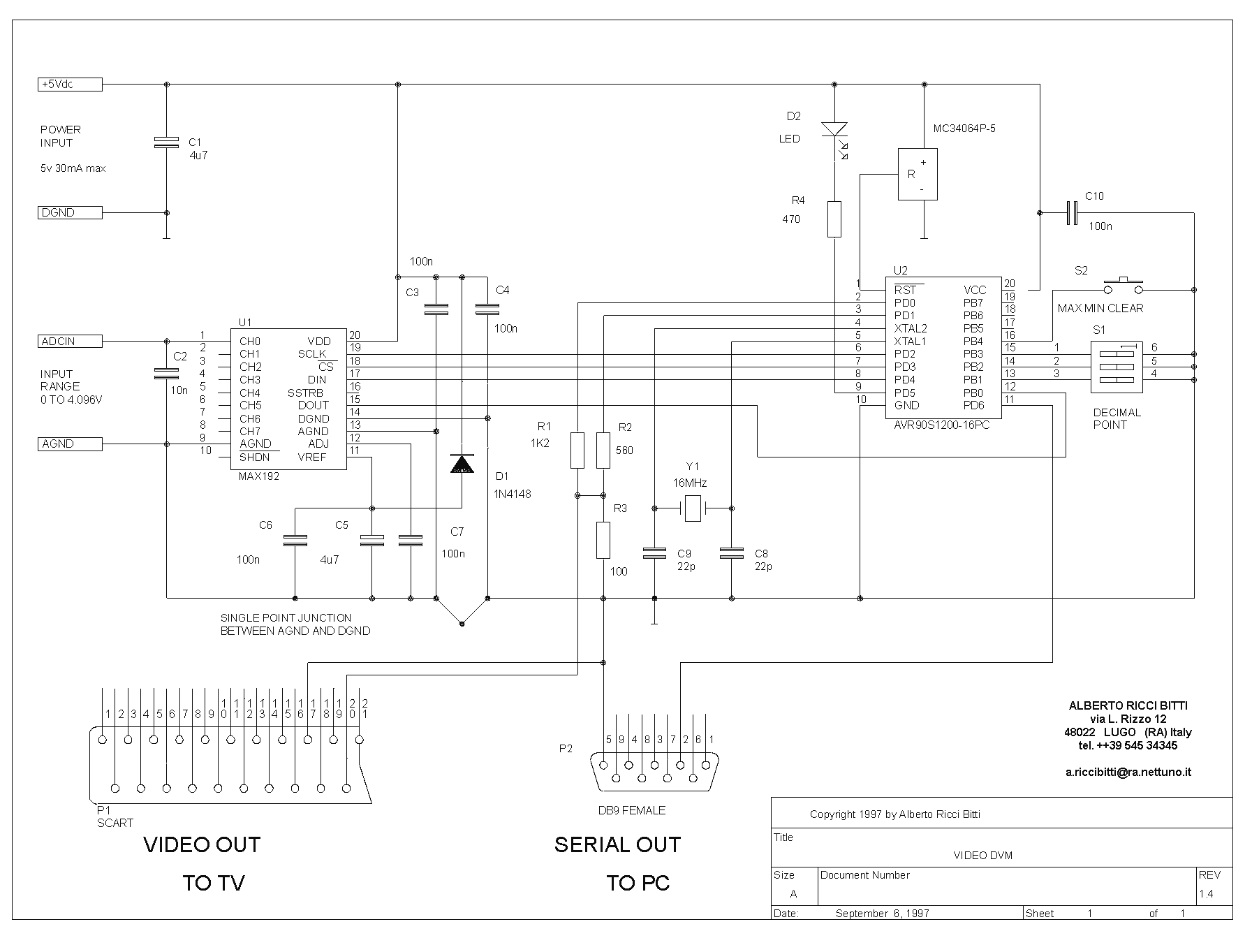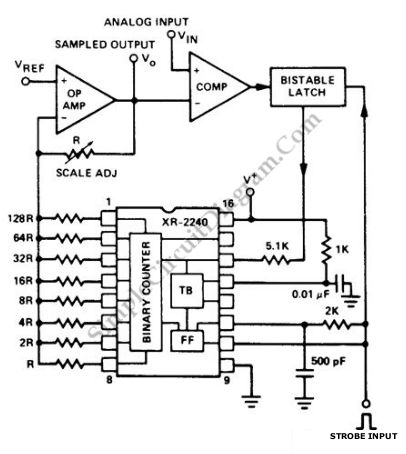
Single-Dual digital LED dice circuit
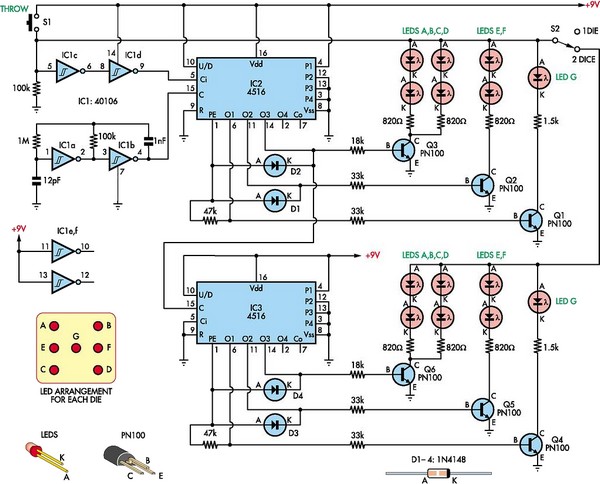
This circuit utilizes two 4516 integrated circuits (ICs) to simulate a game involving two dice. A switch is included to select whether one or two dice will be activated with each press. A 9-volt battery is sufficient for power supply. It is recommended to construct a compact enclosure and arrange the LEDs according to the provided diagram.
The circuit design employs two 4516 ICs, which are dual 4-bit binary counters. These counters will effectively simulate the random output of dice rolls by generating binary numbers that correspond to the values of the dice. Each IC can count from 0 to 15, but for the purpose of simulating dice, the outputs will be limited to the range of 1 to 6, which can be achieved through additional logic circuitry.
The switching mechanism allows the user to select between one or two dice rolls. This can be implemented using a single-pole double-throw (SPDT) switch that alters the circuit configuration to enable either one or both counters. When the switch is set to one die, only one of the 4516 ICs will be active, while the second IC remains inactive. Conversely, when the switch is set to two dice, both ICs will be engaged, and their outputs will be displayed simultaneously.
Powering the circuit with a 9-volt battery provides adequate voltage for the 4516 ICs, ensuring reliable operation. The circuit should include appropriate decoupling capacitors near the power pins of the ICs to minimize noise and improve stability.
The output of the counters will be displayed using LEDs, which will visually represent the results of the dice rolls. Each die's output will be connected to a set of LEDs arranged in a manner that corresponds to the numbers 1 through 6. The design should ensure that only one LED lights up at a time for each die, representing the rolled value. This can be accomplished using a combination of resistors and transistors to control the current flowing to each LED based on the binary output from the ICs.
The construction of the circuit within a small enclosure will not only enhance portability but also provide protection to the components. Careful attention should be paid to the layout to ensure that all connections are secure and that the LEDs are positioned according to the schematic diagram for optimal visibility.By using two 4516 ICs, this circuit will simulate two dices playing game. There is a switch to choose if one or two dices will be run at each throw pressing. A 9 volt battery willl be ok. Make a nice small box and place the LEDS acorcding to the diagram shown. 🔗 External reference
The circuit design employs two 4516 ICs, which are dual 4-bit binary counters. These counters will effectively simulate the random output of dice rolls by generating binary numbers that correspond to the values of the dice. Each IC can count from 0 to 15, but for the purpose of simulating dice, the outputs will be limited to the range of 1 to 6, which can be achieved through additional logic circuitry.
The switching mechanism allows the user to select between one or two dice rolls. This can be implemented using a single-pole double-throw (SPDT) switch that alters the circuit configuration to enable either one or both counters. When the switch is set to one die, only one of the 4516 ICs will be active, while the second IC remains inactive. Conversely, when the switch is set to two dice, both ICs will be engaged, and their outputs will be displayed simultaneously.
Powering the circuit with a 9-volt battery provides adequate voltage for the 4516 ICs, ensuring reliable operation. The circuit should include appropriate decoupling capacitors near the power pins of the ICs to minimize noise and improve stability.
The output of the counters will be displayed using LEDs, which will visually represent the results of the dice rolls. Each die's output will be connected to a set of LEDs arranged in a manner that corresponds to the numbers 1 through 6. The design should ensure that only one LED lights up at a time for each die, representing the rolled value. This can be accomplished using a combination of resistors and transistors to control the current flowing to each LED based on the binary output from the ICs.
The construction of the circuit within a small enclosure will not only enhance portability but also provide protection to the components. Careful attention should be paid to the layout to ensure that all connections are secure and that the LEDs are positioned according to the schematic diagram for optimal visibility.By using two 4516 ICs, this circuit will simulate two dices playing game. There is a switch to choose if one or two dices will be run at each throw pressing. A 9 volt battery willl be ok. Make a nice small box and place the LEDS acorcding to the diagram shown. 🔗 External reference
Warning: include(partials/cookie-banner.php): Failed to open stream: Permission denied in /var/www/html/nextgr/view-circuit.php on line 713
Warning: include(): Failed opening 'partials/cookie-banner.php' for inclusion (include_path='.:/usr/share/php') in /var/www/html/nextgr/view-circuit.php on line 713
